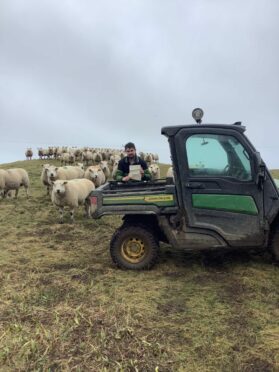A young farmer from Orkney has discovered a letter sent by the government to his great grandfather during the First World War.
Douglas Paterson, from Veltigar, near Tankerness, found the letter in a derelict house on the farm, which was sent from Downing Street on March 5, 1917.
It highlighted the importance of agriculture and food security, urging all farmers throughout the UK to do their upmost to keep the country fed when importing was not an option.
The sixth generation farmer recently posted a photograph of the letter and the envelope on Facebook, attracting hundreds of likes and shares from all over the country.
One person commented and suggested that the letter should be sent straight to Downing Street to remind officials that food production and security is still just as imperative.
“The letter proves that the same government once asked us farmers to produce as much food as possible for the nation, now they are telling us to produce less,” said Mr Paterson.
“With a war raging only 1,500 miles away in Ukraine right now, a self inflicted food shortage by the supermarkets, and a cost of living crisis, it has never been more crucial to shop local and back British farming.”
The letter reads: Dear Sir, we have now reached a crisis in the war when to ensure victory, the heroism of our armies at the front must be backed by the self-sacrifice and tireless labour of everyone at home.
To this end, the production of each quarter of wheat and oats, and of each bushel of potatoes, is of vital importance. The work of the next few weeks must decide the harvest of the year and in the nation’s interest, I urge you at whatever personal sacrifice to overcome all obstacles to throw your fullest energies into the work and to influence and encourage all who assist you, so that every possible acre shall be sown.
The imperative demands of the war have made it impossible to avoid calling up men fit for active service, even though skilled in farming. As far as possible, this is being met by bringing on to the land men and women from other industries.
They cannot be expected to do work equal to that of men expert in agriculture, but there is no time for delay and the government is confident that farmers will at once step forward and do all in their prior to utilise their services to the best advantage.
The farmers of this country can defeat the German submarine and when they do they destroy the last hope of the Prussian.

